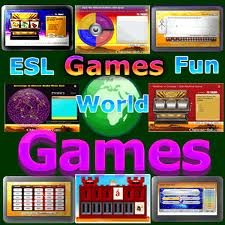Strategies ESOL
Strategies when teaching students whose first language is not English
Grade your language
Speak at normal speed and with normal volume. Grade vocabulary and grammatical structures which the student will be more likely to understand......i.e.. instead of “having done the initial section, move on to the blow-drying.”............... try instead...”Do this first and then blow dry after that.” “Chunk” information, i.e. break it down into manageable bite size pieces of information and recap continually. Warmers are good at the beginning of the lesson to recap new vocabulary /input.
Try using:
Word bingo where the students write 9 new words in a grid from the previous lesson and you pull out words at random from a bag. (This is good for ALL students).
Half a crossword, which can easily be made from the puzzlemaker.com website. Students have only half a crossword completed and they have to take it in turns to describe the words on their crossword to their partners who have different words on their half. (This is good for ALL students).
Matching exercises using pictures and words on cards. The teaching then becomes multisensory rather than simply filling in labels. The word cards can then be used in a variety of ways for revision.
Use clear, concise instructions:
Ideally, demonstrate what you want students to do: show rather than tell. Check for understanding by asking yes/no questions rather than “Do you understand?” .
Vocabulary:
Introduce new vocabulary visually if possible rather than by description. Get students to repeat the word back to you to practise pronunciation before it is written. If the word has two syllables or more start at the last syllable and add the other syllables on in chunks ending at the first syllable i.e zygomatic ..tic....matic.....gomatic....zygomatic. This encourages more natural stress placement on words.
Vocabulary books: these can be organised by subject i.e. bones in the body , carpentry tools etc.
Reading : Find out by discussion what the student already knows about the subject. Get them to predict the content of the article/text through headlines and any visual clues on the page. Give some simple true/false questions which they should be able to achieve within a time limit. Get them to check the answers in pairs and give feedback before asking questions which require inference and more in depth understanding.
Listening: Include breaks in lectures (maximum 20 minutes of input). Always give a reason for listening i.e. provide true/false questions when watching video clips which can be completed while they watch.
Other recommendations:
· Allow students to use dictaphones or laptops in lectures
· Give an outline/overview of the lecture at the start
· Recap and review points using a variety of means
· Use visual aids or examples to illustrate key points
· Provide vocabulary lists for key terms used within their course.
· Provide handouts of OHP used in lectures or allow longer for copying from board
· Include short breaks in long lectures
· Give the learner time to think before answering questions in class, and enough time to read information before being expected to use, or discuss, it
Assignments
· Give the student the opportunity to talk through the assignment brief
· Give guidance to identify essential reading - exact references for information
· Give models of how assignments should be structured
· Give plenty of warning of deadlines
· Give clear feedback about assignments focusing on strengths and how they could improve their assignments, especially with structure and organisation
· In individual tutorials, it is useful to give students short, clear written points, or allow them to tape their tutorials, so they have something to refer to later
All the above strategies will benefit all learners and are just good teaching practice

|

|

|

|
